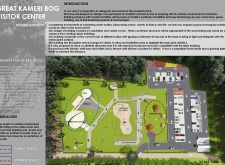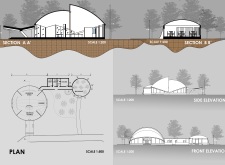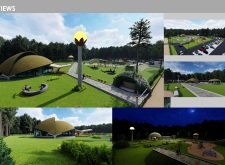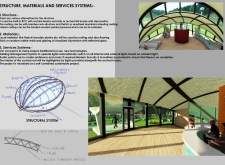5 key facts about this project
The Great Kameri Bog Visitor Center is located in the distinctive ecological region of Latvia, known for its rich plant and animal life. The center is designed to offer a welcoming environment for visitors while educating them about the importance of the bog ecosystem. The design concept focuses on blending the building with its natural surroundings through gentle curves and sustainable practices.
Design Concept
The visitor center features two curved roofs that reflect the smooth lines of the landscape. This shape not only adds to the visual interest of the building but also allows for ample natural light through strategically placed glass. The layout encourages visitors to connect with the beauty of the outdoor environment, promoting a sense of tranquility.
Functional Zones
Inside, the center has several areas dedicated to different purposes. There is a reception area, a comfortable lounge, and an exhibition space designed to highlight the ecological importance of the bog. This thoughtful arrangement makes it easy for visitors to navigate the center while providing opportunities for learning and exploration.
Sustainable Features
The design incorporates various sustainable elements aimed at reducing its ecological footprint. Camping and parking areas are separated, using landscaped earthen mounds to create privacy and limit visual impact. The inclusion of solar panels demonstrates a commitment to energy efficiency, further supporting the overall goal of environmental preservation.
Materiality
Possible materials for the center include reinforced concrete with arched beams, arched metal trusses, bamboo sub-structures, thatch roofing, and anodized aluminum sheeting. Fire-treated wooden planks or plywood may also be used for interior ceilings, creating a warm and inviting interior environment that meets safety requirements.
From the smooth curves of its roofs to the carefully planned interior spaces, the design encourages visitors to engage with nature and appreciate Latvia’s unique ecological landscape. Each element is purposeful, enhancing the overall experience.






















































